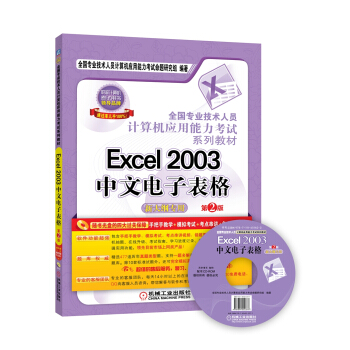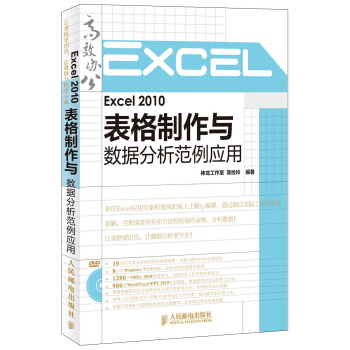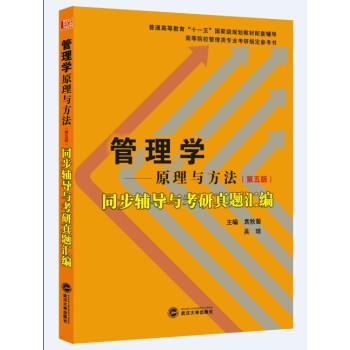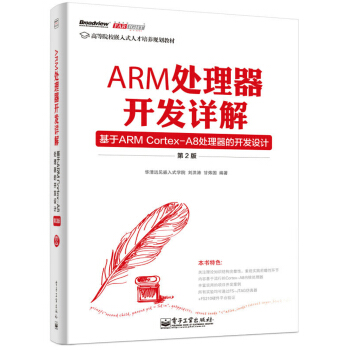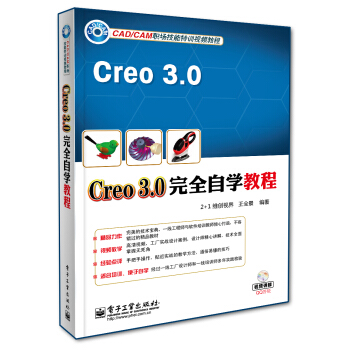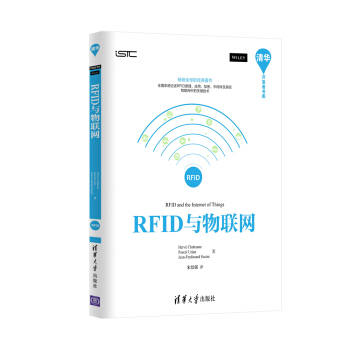![经典原版书库:数据库系统概念(英文精编版·第6版) [Database System Concepts]](https://pic.tinynews.org/11157154/rBEGDFD405kIAAAAAAmnYpMXTPIAABXjwBmwCAACad6712.jpg)

具体描述
内容简介
《经典原版书库:数据库系统概念(英文精编版·第6版)》内容由浅入深,既包含数据库系统基本概念,又反映数据库技术新进展。它被国际上许多著名大学所采用,包括斯坦福大学、耶鲁大学、得克萨斯大学、康奈尔大学、伊利诺伊大学等。我国也有多所大学采用《经典原版书库:数据库系统概念(英文精编版·第6版)》作为本科生和研究生数据库课程的教材和主要教学参考书,收到了良好的效果。《经典原版书库:数据库系统概念(英文精编版·第6版)》基于该书第6版进行改编,保留其中的基本内容,压缩或删除了一些高级内容,更加适合作为国内高校计算机及相关专业本科生数据库课程教材。作者简介
Abraham Silberchatz,于纽约州立大学石溪分校获得博士学位,现为耶鲁大学计算机科学SidneyJWeinberg教授,计算机科学系主任,曾任贝尔实验室信息科学研究中心副主任。HenryF.Korth,于普林斯顿大学获得博士学位,现为利哈伊大学计算机科学与工程系Weiseman教授,曾任贝尔实验室数据库原理研究中心主任。他是ACM Fellow和IEEE Fellow,是VLDB10年贡献奖的获得者。
S.Sudarshan,于威斯康星大学麦迪逊分校获得博士学位,现为印度理工学院计算机科学与工程系教授,曾为贝尔实验室数据库研究组技术人员。
内页插图
目录
Chapter 1 Introduction1.1 Database-System Applications
1.2 Purpose of Data base Systems
1.3 View of Data
1.4 Database Languages
1.5 Relational Databases
1.6 Database Design
1.7 Data Storage and Querying
1.8 Transaction Management
1.9 Database Architecture
1.10 Data Mining and Information Retrieval
1.11 Specialty Databases
1.12 Database Users and Administrators
1.13 History of Database Systems
1.14 Summary
Review Terms
Practice Exercises
Exercises
Tools
Bibliographical Notes
PART ONE RELATIONAL DATABASES
Chapter 2 Introduction to the Relational Model
2.1 Structure of Relational Databases
2.2 Database Schema
2.3 Keys
2.4 Schema Diagrams
2.5 Relational Query Languages
2.6 Relational Operations
2.7 Summary
Review Terms
Practice Exercises
Exercises
Bibliographical Notes
Chapter3 Introduction to SQL
3.1 Overview of the SQL Query Language
3.2 SQL Data Definition 3.3 Basic Structure of SQL Queries
3.4 Additional Basic Operations
3.5 Set Operations
3.6 Null Values
3.7 Aggregate Functions
3.8 Nested Subqueries
3.9 Modification of the Database
3.10 Summary
Review Terms
Practice Exercises
Exercises
Tools
Bibliographical Notes
Chapter 4 Intermediate SQL
4.1 Join Expressions
4.2 Views
4.3 Transactions
4.4 Integrity Constraints
4.5 SQL Data Types and Schemas
4.6 Authorization
4.7 Summary
Review Terms
Practice Exercises
Exercises
Bibliographical Notes
Chapter 5 Advanced SQL
5.1 Accessing SQL From a Programming Language
5.2 Functions and Procedures
5.3 Triggers
5.4 Recursive Queries
5.5 Advanced Aggregation Features
5.6 OLAP
5.7 Summary
Review Terms
Practice Exercises
Exercises
Tools
Bibliographical Notes
Chapter 6 Formal Relational Query Languages
6.1 The Relational Algebra
6.2 The Tuple Relational Calculus
6.3 The Domain Relational Calculus
6.4 Summary
Review Terms
Practice Exercises
Exercises
Bibliographical Notes
PART TWO DATABASE DESIGN
Chapter 7 Database Design and the E-R Model
7.1 Overview of the Design Process
7.2 The Entity-Relationship Model
7.3 Constraints 269
7.4 Removing Redundant Attributes in Entity Sets
7.5 Entity-Relationship Diagrams
7.6 Reduction to Relational Schemas
7.7 Entity-Relationship Design Issues
7.8 Extended E-R Features
7.9 Alternative Notations for Modeling Data
7.10 0ther Aspects of Database Design
7.11 Summary
Review Terms
Practice Exercises
Exercises
Tools
Bibliographical Notes
Chapter 8 Relational Database Design
8.1 Features of Good Relational Designs
8.2 Atomic Domains and First Normal Form
8.3 Decomposition Using Functional Dependencies
8.4 Functional-Dependency Theory
8.5 Algorithms for Decomposition
8.6 Decomposition Using Multivalued Dependencies
8.7 More Normal Forms
8.8 Database-Design Process
8.9 Modeling Temporal Data
8.10 Summary
Review Terms
Practice Exercises
Exercises
Bibliographical Notes
PART THREE DATA STORAGE , QUERYING, AND TRANSACTION MANAGEMENT
PART FOUR ADVANCED TOPICS
Bibliography
精彩书摘
Atomicity: Suppose that, just before the execution of transaction Ti, the values of accounts A and B are $1000 and $2000, respectively. Now suppose that, during the execution of transaction Ti, a failure occurs that prevents Ti from completing its execution successfully. Further, suppose that the failure happened after the write(A) operation but before the write(B) operation. In this case, the values of accounts A and B reflected in the database are $950 and $2000. The system destroyed $50 as a result of this failure. In particular, we note that the sum A + B is no longer preserved.Thus, because of the failure, the state of the system no longer reflects a real state of the world that the database is supposed to capture. We term such a state an inconsistent state. We must ensure that such inconsistencies are not visible in a database system. Note, however, that the system must at some point be in an inconsistent state. Even if transaction Ti is executed to completion, there exists a point at which the value of account A is $950 and the value of account B is $2000, which is clearly an inconsistent state. This state, however, is eventually replaced by the consistent state where the value of account A is $950, and the value of account B is $2050.Thus, if the transaction never started or was guaranteed to complete, such an inconsistent state would not be visible except during the execution of the transaction. That is the reason for the atomicity requirement: If the atomicity property is present, all actions of the transaction are reflected in the database, or none are.
The basic idea behind ensuring atomicity is this: The database system keeps track (on disk) of the old values of any data on which a transaction performs a write. This information is written to a file called the log. If the transaction does not complete its execution, the database system restores the old values from the log to make it appear as though the transaction never executed. Ensuring atomicity is the responsibility of the database system; specifically, it is handled by a component of the database called the recovery system, which we describe in detail in Section 12.7.
Durability: Once the execution of the transaction completes successfully, and the user who initiated the transaction has been notified that the transfer of funds has taken place, it must be the case that no system failure can result in a loss of data corresponding to this transfer of funds. The durability property guarantees that, once a transaction completes successfully, all the updates that it carried out on the database persist, even if there is a system failure
after the transaction completes execution.
We assume for now that a failure of the computer system may result in loss of data in main memory, but data written to disk are never lost. We can guarantee durability by ensuring that either:
1. The updates carried out by the transaction have been written to disk before the transaction completes.
2. Information about the updates carried out by the transaction is written to disk, and such information is sufficient to enable the database to reconstruct the updates when the database system is restarted after the failure.
……
前言/序言
数据库系统是对数据进行存储、管理、处理和维护的软件系统,是现代计算环境中的一个核心成分。随着计算机硬件、软件技术的飞速发展和计算机系统在各行各业的广泛应用,数据库技术的发展尤其迅速,引人注目。有关数据库系统的理论和技术是计算机科学技术教育中必不可少的部分。《数据库系统概念》是一本经典的、备受赞扬的数据库系统教科书,其内容由浅入深,既包含数据库系统的基本概念,又反映数据库技术新进展。本书被国际上许多著名大学采用,并多次再版。我们先后将本书的第3版、第4版、第5版和第6版译成中文,由机械工业出版社分别于2000年、2003年、2006年和2012年出版发行。国内许多大学采用《数据库系统概念》作为本科生和研究生数据库课程的教材或主要教学参考书,收到了良好的效果。
我们基于《数据库系统概念》第5版进行了改编,保留其中的基本内容,压缩或删除了一些高级内容,形成了该书的本科教学版,其目的是使它更适合本科生的数据库课程使用。该本科教学版由机械工业出版社于2008年出版发行,被国内许多高校采用作为本科生数据库课程的教材或主要教学参考书。
现在我们又基于《数据库系统概念》第6版进行了改编工作,希望它能够成为一本效果更好、更实用的本科生数据库课程的教材。
……
用户评价
这本书的内容之丰富,让我感到既震撼又兴奋。我一直认为,要想真正掌握一个领域,就必须深入了解其“为什么”和“如何做”。而这本书正是满足了我这种学习需求。它不仅介绍了各种数据库技术的“是什么”,更深入地探讨了“为什么会这样设计”以及“如何实现”。从逻辑设计到物理存储,从查询优化到并发控制,几乎涵盖了数据库系统的所有重要方面。而且,它不仅仅是理论的堆砌,还穿插了大量的实际案例和应用场景,让我能够将抽象的理论与实际工作联系起来。我尤其喜欢书中对不同数据库系统架构的比较和分析,这有助于我拓宽视野,了解各种技术的适用范围和局限性。这本书就像一本通往数据库系统深处的大门钥匙,为我打开了一个充满挑战和机遇的新世界。
评分这本书的厚度和分量,可以说是一本“百科全书”级别的数据库系统指南。我是在一次偶然的机会中听一位资深数据库工程师推荐的,他提到这本书是他学习和工作中不可或缺的参考。拿到手后,我能深刻体会到这种“经典”二字的分量。从数据库的诞生、发展到现代的各种先进技术,这本书仿佛将整个数据库系统的演变历程和核心原理娓娓道来。我尤其关注其中关于并发控制和恢复技术的部分,这些是保证数据库稳定运行的关键,也是我一直以来想要深入了解的领域。书中对各种算法和机制的讲解,配以严谨的数学推导和清晰的逻辑分析,让我对这些复杂的技术有了豁然开朗的感觉。这本书不仅适合初学者建立体系化的认识,也对有一定基础的从业者提供了深入研究的理论支撑,是一本真正能够伴随读者成长的经典之作。
评分对于我这个对技术细节有着极致追求的读者来说,这本书的数学严谨性和理论深度是它最大的亮点。在阅读过程中,我发现作者并没有回避那些复杂的算法和理论证明,而是用一种非常清晰且有条理的方式将其呈现出来。比如,在讲解索引的实现原理时,书中不仅介绍了B+树等经典结构,还深入剖析了它们在不同场景下的性能表现和优劣势。这种深入骨髓的分析,对于我理解数据库性能优化的本质非常有帮助。而且,作为一本英文原版精编,它避免了翻译过程中可能出现的概念混淆,让我能够直接接触到最权威的学术表达。我非常有信心,通过对这本书的细致研读,我能够大大提升我对数据库底层工作机制的理解,从而在未来的工作中能够更有效地设计、优化和管理数据库系统。
评分我必须说,这本书的排版布局给我留下了深刻的印象。虽然是英文原版,但其清晰的字体、合理的行间距以及图示的精良制作,都使得阅读体验变得非常愉悦,丝毫不会因为语言障碍而感到疲惫。我特别欣赏作者在讲解复杂概念时所使用的图表和示例,它们极大地帮助我理解了抽象的理论。在翻阅的过程中,我注意到书中对数据库的理论基础,例如关系模型、SQL语言以及事务管理等方面都有非常详尽的阐述。这些都是数据库领域的核心知识,而这本书能够如此系统地呈现,并且还包含了第六版所更新的内容,足见其内容的全面性和时效性。对于像我这样,希望在数据库领域有所建树的读者来说,一本能够涵盖如此广泛且深入内容的经典著作,无疑是不可多得的宝藏。我计划将其作为我近期的主要学习材料,并期待能够从中获得启发和知识的飞跃。
评分这本书的装帧设计实在是令人眼前一亮,硬壳封面,纸张的质感也相当不错,拿在手里沉甸甸的,充满了专业和权威感。我一直以来都对数据库领域抱有浓厚的兴趣,而“经典原版书库”这个系列的名字本身就预示着其内容的扎实和价值。拿到这本书后,迫不及待地翻阅了一下,虽然还没有深入研读,但仅从目录和章节划分就能感受到其严谨的逻辑结构和内容的深度。英文原版精编,对于想要深入学习和理解数据库系统最前沿知识的我来说,是绝佳的选择。不同于一些国内翻译书籍可能存在的理解偏差或术语不统一的问题,直接阅读原版能够更准确地把握作者的意图和最新的学术观点。这本书的出现,无疑为我在这个领域的研究和学习铺平了道路,让我对未来的探索充满了期待。我相信,通过对这本书的系统学习,我能建立起对数据库系统全面而深入的理解,为我未来的学术研究或职业发展打下坚实的基础。
评分全英文的,有点难度,看的烧脑!!!!
评分质量很好,快递很快,就是书比较小,不是预想的大版
评分是超级经典的好教材。但是教训是教学版!!!因此精简掉了许多内容。不过很便宜也就满意了
评分很好我好喜欢的
评分肥肠经典的一本书啊!!!!!
评分挺不错的,推荐去买,用处很大
评分质量很好,快递很快,就是书比较小,不是预想的大版
评分在蔡骏的精心构思之下,他笔下的诸多经典场景与人物悉数登场。随着主人公少年司望神秘的复仇行动展开,一宗宗悬而未决的案件逐一明朗,种种错综复杂的关系纠葛由此而生,人物的命运与人性的复杂交织成一首激荡的交响曲!《生死河》深入罪犯的精神世界,探索杀人犯罪的社会原因,揭示社会矛盾和黑暗现象。情节曲折,环环相扣,耐人寻味。在保留严密推理的基础上,重视挖掘案情发生的动机,追究犯罪的社会原因。《生死河》中激情澎湃的情节设置、严谨细密的解谜手法,充满忧患反思的作家良知以及对社会变迁的敏锐观察使得这部作品成为华语悬疑文学划时代性作品。“即使对世界感到绝望,所有人都抛弃了你,但还是要活着!因为最爱你的人说:你必须等待我长大!”这一悲伤的主题完美阐释了“大时代”里凄凉的“小命运”!人物的命运和人性的复杂,仿佛海上的冰山,慢慢浮现!这已经不是单纯的悬疑小说,而是一部展现广阔社会和复杂人性的文学作品!极具创意的故事构思,跨越前生今世的神秘凶案,再现波云诡谲的时代记忆 这次赶上京东满150返还50的促销活动,每一本书都包装的很完整,用塑料套子塑封好的,保证了书籍的整洁完整不破损,打开来看,印刷很清晰,一看就是正品书,没有错别字,而且字体印刷很大,排版也排的很合理,看着不伤眼睛,纸张质量也相当的好,总之,以低价来买一本质量好的正版书,绝对是上算的。多读书可以提高人的综合素养,多读书,可以让你多增加一些课外知识。古人云:书中自有黄金屋,书中自有颜如玉。古人读书的目的功利性比较强,现代人就不一定了,除了工作学习上的需要,给自己充充电占了一大部分,毕竟,人的一生很短,书中的东西很精彩,如果我们不能延展生命的长度,那么,就多少读一点书,来拓宽生命的宽度,好的书是人类的良师益友,多读书,可以使人变得更加聪明更加理性,遇到问题可以很好的独立解决,这样的话,又使得你在人生的道路上多漫出了一步,多读书,能使人的心情变得愉快起来,所以说,读书不但可以增长知识,而且还是一种娱乐的方式,读书可以调节身体的血管流动,使你身心健康。所以在书的海洋里遨游也是一种快乐的事情。用读书来为自己放松心情也是一种十分明智的。 读书能陶冶人的情操,给人知识和智慧。所以,作为一个人,应该在空闲时刻多读书,不管年龄大小,读书对人有好处,读书可以养性,可以陶冶自己的性情,使自己变得更加温文尔雅,俗话说腹有诗书气自华,慢慢变得具有书卷气;读书破万卷,下笔如有神,多读书可以提高写作能力,写文章就才思敏捷;读书不厌百回读,熟读深思子自知,读书可以提高理解能力,只要熟读深思,反复阅读,你就可以知道其中的道理了。
评分虽然不是英文全部哈,但精编的也不错呢。适合有一点英语基础的人看,
相关图书
本站所有内容均为互联网搜索引擎提供的公开搜索信息,本站不存储任何数据与内容,任何内容与数据均与本站无关,如有需要请联系相关搜索引擎包括但不限于百度,google,bing,sogou 等
© 2025 book.idnshop.cc All Rights Reserved. 静思书屋 版权所有






